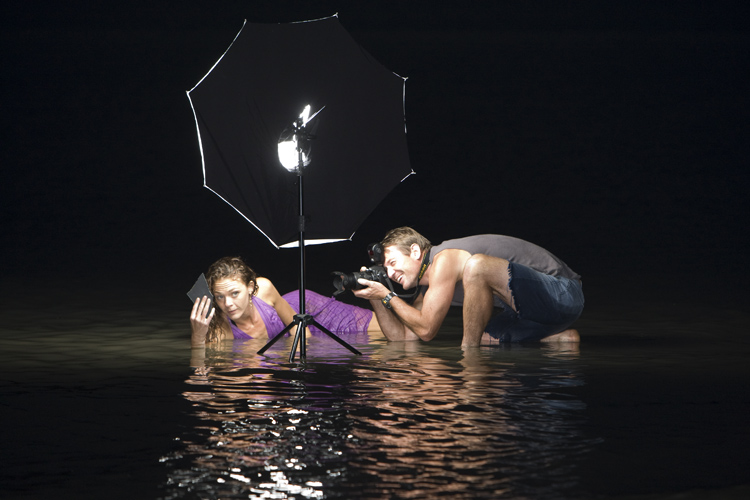When I bought a Godox K-150A recently I found that it was weaker than my Nikon SB800 flash. Several years ago I made a turbo-flash by adding a 3300uf capacitor to an older hammer-head flash. I decided to try that with this Godox, after all, the flash tube on it is pretty big so should be able to handle the power. The instructions advise a 3 minute cooling period after 30 full power flashes in a row which suggest something obvious - flash tubes work off a duty cycle. In other words you could fire it 30 times at full power in maybe one minute, then let it rest for 3 minutes [180 seconds rest plus 60 seconds shooting = 240 seconds for 30 flashes] - OR you could fire it at full power once every 8 seconds, 30 X 8 = 240. I realised similar results on my previous modification because at the time the batteries I had weren’t very good and it took so long to charge I could fire it at 5X the normal power as much as I wanted because it got so much rest while charging.
When I opened the Godox K-150A to have a look at connecting some wiring for an external capacitor [Don’t try this at home! The capacitors can kill you!] I caught a glimpse of one of the 4 capacitors inside and it had “330uf” on the side - about 1300uf in total.
The capacitor I have is rated at 3300uf and 350v but I have charged it to over 500v previously and discharged it through an SCR to make a wire explode into plasma and split a glass jar full of water, so I knew it could handle the load. Adding the 3300uf capacitor should make it 4X as powerful in total so firing it once every 30 seconds should be perfectly doable without any issues - or maybe 8 times in a row every 240 seconds [hmmmm, maybe I should add a cooling fan?]. Either way most of the time we wouldn’t be using it at full power except maybe outdoors, then we could perhaps fire it at full power 5 or 6 times in succession and then give it time to cool down for a while. Besides, it’s an interesting experiment.
Here are the results of a comparison at iso200 f22 and 1/100th sec with my old Nikon D50 triggering the flash in remote mode with the built in flash on minimum power. I fired the Godox flash on minimum power, half power and full power each test. The interesting part is that the flash seems to charge a different voltage for each power selection so if you had it on full power, then turn it back to minimum, it fires at full power anyway then gets it right the next time because it can put in less charge.
I originally started with f11 on the tests but the turbo-flash was so much brighter that I went to f22. Afterwards I tried to find two images that looked similar. The light had moved at some stage so the images look slightly different but their histograms are pretty close. The original light at f11 was very close to the modified light at f22 which would give us close to 2 stops more power - or 4X the power as per my original estimate.
I have tried charging this flash with a $10 inverter along with a security battery and it works, which makes it a viable “poor mans outdoor light”. But don’t try it yourself or it could end up being a “dead man’s botch-up”
As mentioned previously, this could prove fatal if you don’t know what you’re doing. I discharge the capacitors before working with them and if you don’t know how to do that I’m not going to tell you or encourage you to do it.
At the moment it is all just taped together, after all why be a perfectionist about it before you know if it will work or not?!
I have disassembled it for now as it wasn’t practical. maybe for someone with no other options who had a spare capacitor lying around it would be an option, but as a DIY mod the capacitor would cost more than the light itself, and for that price you can buy the E300 which would be less bulky and also not worry about blowing your fingertips off in the process :)






